Contact us ?
Your challenges
in managing your equipment and assets
- Addressing the challenges associated with maintaining ageing infrastructure to prevent unexpected failures and downtime.
- Ensuring compliance with industry regulations and standards to avoid penalties and legal issues.
- Optimising asset performance to maximise efficiency and productivity while minimising operational disruptions.
- Helping companies identify and mitigate corrosion risks to prevent asset deterioration and prolong lifespan.
- Implementing cost-effective corrosion management strategies to reduce maintenance expenses and improve budget allocation.
- Mitigating safety hazards associated with corrosion-related failures to protect personnel and assets.
- Implementing strategies to reduce unplanned downtime and improve operational reliability.
- Developing cost-effective maintenance plans to reduce overall maintenance expenses while maintaining asset reliability.
- Enhancing maintenance strategies to ensure optimal asset performance and longevity.
- Identifying potential hazards in the workplace to mitigate risks and prevent accidents.
- Ensuring compliance with safety regulations and standards to maintain a safe working environment.
- Fostering a culture of safety within the organisation to promote employee well-being and prevent accidents.
Apave Solutions
in Middle East

Asset Integrity & Management services

Asset Integrity & Management services
Our Asset Integrity & Management Services focus on ensuring the longevity, reliability, and safety of your assets. We offer evaluations and assessments to determine asset feasibility, structural integrity, and compliance with standards. These services include measures to prevent failures and leaks, estimate remaining operational life, and prioritise inspection efforts. By implementing risk-based inspection strategies and organising asset hierarchies, we aim to maximise safety, minimise downtime, and optimise maintenance efforts, ultimately supporting your operational excellence goals.
- Asset Life Extension Studies: Evaluations conducted to determine the feasibility and methods of extending the operational life of assets, typically involving assessments of current conditions, performance, and potential risks.
- Fitness for Service Analysis: Assessments performed to determine if equipment or structures are suitable for continued operation under current or anticipated conditions, considering factors such as structural integrity and compliance with standards.
- Pipeline Integrity: Measures and procedures implemented to ensure the safe and reliable operation of pipelines, often involving inspections, monitoring, and maintenance to prevent failures and leaks.
- Remaining Life Assessment: Evaluations conducted to estimate the remaining operational life of assets, based on factors such as historical performance, usage, and condition assessments.
- Risk-Based Inspection (RBI): An approach to inspection planning and prioritisation that focuses resources on areas with the highest risk of failure, aiming to maximise safety, minimise downtime, and optimise maintenance efforts.
- Asset Hierarchy Built: The process of organising and categorising assets within a system or facility, typically structured in a hierarchical format to facilitate maintenance planning, asset tracking, and management.
- Criticality Analysis: Evaluations conducted to determine the importance and impact of assets on operations, safety, and business objectives, identifying critical assets that require prioritised attention and maintenance.
- SAP PM & MM Master Data Built: The creation and management of accurate master data within SAP Plant Maintenance (PM) and Materials Management (MM) modules, including information on equipment, maintenance schedules, spare parts, and procurement processes, to support effective maintenance and inventory management in SAP systems.
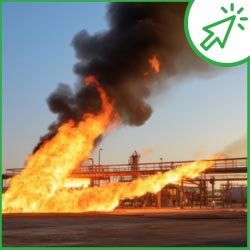
Risk assessment & Safety services

Risk assessment & Safety services
Managing risks and ensuring safety is paramount in any industry. Facing challenges in identifying potential hazards, complying with safety regulations, and implementing effective safety measures. Our Risk Assessment and Safety Services will help you identify and mitigate risks, develop robust safety protocols, and foster a culture of safety within your organizations.
- Building Risk Assessment evaluates risks associated with buildings to ensure their safety and compliance with relevant regulations. It considers various hazards, including structural integrity, fire risks, and environmental impacts. The outcome is a comprehensive risk profile and mitigation plan for the building.
- Quantitative Risk Assessment uses numerical methods to evaluate the levels and potential impacts of risks. This approach aids in making informed decisions about risk management and prioritizing safety measures. It involves data collection, statistical analysis, and modeling to provide a clear risk picture.
- As Low As Reasonably Practicable Demonstration determines that risks have been reduced to the lowest practical level by balancing the benefits of risk reduction against the associated costs and efforts. It involves a thorough evaluation of existing safety measures and the potential for further risk mitigation. The goal is to ensure compliance with safety standards while maintaining cost-effectiveness.
- Bowtie Analysis is a visual risk assessment tool that identifies potential pathways leading to incidents and maps out controls and barriers. It helps in understanding the relationship between hazards, preventive measures, and possible consequences. This method enhances the clarity and communication of risk management strategies.
- Dropped Object Survey identifies and assesses risks from potential dropped objects in operational environments. It includes a detailed examination of areas where objects could fall, the likelihood of such events, and their potential consequences. The goal is to prevent accidents by implementing appropriate controls and safeguards.
- Emergency System Survivability Analysis evaluates the resilience and effectiveness of emergency systems under adverse conditions. It examines the ability of these systems to function during emergencies, such as fires, explosions, or natural disasters. Recommendations are provided to enhance the reliability and performance of emergency systems.
- Escape, Evacuation and Rescue Analysis analyzes the effectiveness of emergency response plans and procedures for safe evacuation and rescue during incidents. It involves assessing routes, equipment, and personnel readiness to ensure a swift and safe response. The analysis helps in optimizing emergency plans and improving safety.
- Hazard & Operability Study (HAZOP) and Hazard Identification Study (HAZID) are studies of systematic methods for identifying hazards and operability issues in processes and systems. HAZOP focuses on deviations from design intent, while HAZID identifies broader hazards. Both studies aim to enhance safety and operational efficiency by addressing potential problems.
- Inherent Safe Design (ISD) Review examines design processes to ensure that safety features are integrated from the outset. It focuses on minimizing risks by incorporating safe design principles. This proactive approach enhances the overall safety and reliability of systems.
- Layer of Protection Analysis identifies and assesses multiple layers of protection to manage risks effectively. It ensures that there are sufficient safety measures in place to prevent accidents. The goal is to provide a robust safety framework that addresses potential failures at various levels.
- Process Hazard Analysis and Safety Review (PHASER) workshops facilitate the identification and mitigation of process hazards. They involve collaborative sessions with experts to assess risks and develop safety strategies. The study provides actionable insights and recommendations for improving process safety.
- A Safety Case or COMAH (Control of Major Accident Hazards) report is comprehensive documentation demonstrating that safety risks have been systematically identified and managed. It ensures compliance with regulatory requirements and industry standards. The report includes risk assessments, safety measures, and emergency response plans.
- Safety Integrity Level (SIL) assessment assigns levels of risk reduction required for safety instrumented functions. It evaluates the reliability and performance of safety systems. This service ensures that safety systems are appropriately designed to mitigate identified risks.
- Ship Collision Risk Analysis evaluates the risk and potential impact of ship collisions. It considers factors like traffic density, navigation routes, and environmental conditions. The goal is to inform strategies that mitigate maritime hazards and enhance safety.
- Simultaneous Operations (SIMOPS) Study analyzes the risks associated with conducting multiple operations concurrently. It identifies potential conflicts and safety issues that may arise. The study provides recommendations to ensure safe and efficient simultaneous operations.
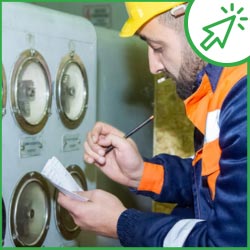
Corrosion Management services

Corrosion Management services
Our corrosion management solutions aim to safeguard industrial assets against the detrimental effects of corrosion. We offer comprehensive strategies and assessments to identify, monitor, and mitigate corrosion risks. From material audits to direct assessment methods, we analyze factors such as environmental conditions and material properties to develop tailored corrosion prevention plans. By employing advanced techniques and material selection criteria, we ensure optimal performance, durability, and cost-effectiveness in combating corrosion challenges, ultimately preserving the integrity and longevity of your assets.
- Corrosion Management Plan: A comprehensive strategy developed to prevent, monitor, and mitigate corrosion in industrial facilities or systems. It includes measures such as material selection, protective coatings, cathodic protection, and regular inspections to minimize the impact of corrosion on assets.
- Corrosion Risk Assessment Study: An evaluation conducted to identify and analyze potential corrosion risks within a system or facility. It assesses factors such as environmental conditions, material properties, operating parameters, and maintenance practices to determine the likelihood and consequences of corrosion-related failures.
- Material Corrosion Audit Study: An examination of materials used in a system or facility to assess their susceptibility to corrosion. It involves analyzing material properties, environmental exposure, past performance, and degradation mechanisms to identify potential corrosion issues and recommend appropriate mitigation measures.
- Internal Corrosion Direct Assessment (ICDA): Internal Corrosion Direct Assessment (ICDA) is a structured process that improves safety by assessing and reducing the impact of internal corrosion on pipeline integrity.
- External Corrosion Direct Assessment (ECDA):External Corrosion Direct Assessment (ECDA) is a structured process that improves safety by assessing and reducing the impact of external corrosion on pipeline integrity.
- Stress Corrosion Cracking Direct Assessment (SSCDA): A method used to assess the susceptibility of pipelines to stress corrosion cracking by examining factors such as material properties, operating conditions, and environmental exposure to determine the risk of stress corrosion cracking.
- Material Selection: The process of choosing materials that are resistant to corrosion for use in specific applications. It involves considering factors such as compatibility with the operating environment, mechanical properties, cost-effectiveness, and availability to ensure optimal performance and durability.
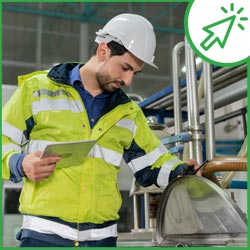
Reliability & Maintenance services

Reliability & Maintenance services
Achieving high reliability and effective maintenance is critical for uninterrupted operations. Companies often encounter challenges with unplanned outages, high maintenance costs, and suboptimal maintenance strategies. Our Reliability and Maintenance Services focus on enhancing equipment performance, reducing downtime, and lowering costs. We help you develop and implement strategies that maximize your asset reliability and maintenance efficiency.
- Failure Analysis is a systematic investigation conducted to determine the root causes of a component, system, or process failure. It involves examining the physical, chemical, and mechanical properties of the failed object, as well as the conditions under which it operated. The goal is to identify the factors that contributed to the failure, such as material defects, design flaws, manufacturing errors, or environmental factors, in order to prevent similar failures from occurring in the future.
- Root Cause Analysis (RCA) is a structured method used to identify the underlying causes of problems or incidents. It involves systematically investigating the chain of events leading up to the problem and identifying the primary cause or causes that, if addressed, could prevent recurrence. RCA typically involves techniques such as brainstorming, fishbone diagrams, and the "5 Whys" approach to delve deeper into the contributing factors and uncover the fundamental issues behind the problem. The ultimate goal of root cause analysis is to implement corrective actions that address the root causes and prevent future occurrences of the problem.
- Reliability Centered Maintenance (RCM) / Reliability, Availability and Maintainability (RAM): A structured approach to maintenance planning and decision-making aimed at optimizing the reliability and performance of assets while minimizing maintenance costs. RCM involves analyzing the functions and failure modes of assets, determining the consequences of failure, and developing maintenance strategies that prioritize actions based on risk, criticality, and cost-effectiveness. The goal of RCM is to ensure that maintenance activities are focused on preserving the reliability and availability of critical assets. RAM analysis aims to optimize these metrics to enhance system performance, minimize downtime, and improve operational efficiency.
- Maintenance Strategy Built: Involves the development of a comprehensive plan or framework for managing maintenance activities within an organization. This includes defining maintenance objectives, establishing maintenance schedules, identifying critical assets, and determining the most effective maintenance approaches (e.g., preventive maintenance, predictive maintenance, corrective maintenance). The maintenance strategy is tailored to the specific needs and priorities of the organization, aiming to maximize asset reliability, minimize downtime, and optimize maintenance costs.
- Preventive Maintenance Optimization: The process of refining and improving preventive maintenance programs to maximize their effectiveness and efficiency. This involves analyzing historical maintenance data, equipment performance, and failure patterns to identify opportunities for optimization. PM Optimization aims to optimize maintenance intervals, tasks, and resources to ensure that maintenance activities are conducted at the right time, with the right frequency, and using the most appropriate methods. The goal is to enhance equipment reliability, extend asset life, and reduce overall maintenance costs.

Design Review & Verification

Design Review & Verification
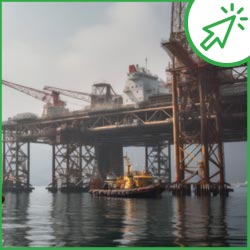
Lifting Analysis of Offshore units

Lifting Analysis of Offshore units
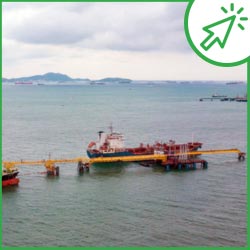
Marine and Offshore

Marine and Offshore
Through meticulous assessments, expert analysis, and strategic planning, we provide the insights and support necessary to optimize performance and mitigate risks in marine and offshore industry. We focus on enhancing operational performance and safety, ensuring your projects are executed with technical integrity and reliability from evaluating adherence to regulatory requirements and industry standards to providing tailored recommendations for project planning and execution.
With detailed condition surveys and thorough due diligence, we help you maintain asset reliability, make informed investment decisions, and achieve sustainable profitability. Whether it's assessing the market value of your assets or representing your interests throughout a project lifecycle, our comprehensive solutions are tailored to meet your specific needs and drive success in the dynamic marine and offshore environments.
- Compliance Audits assess adherence to regulatory requirements, industry standards, and best practices to ensure safety and environmental compliance. These audits identify areas of non-compliance, assess associated risks, and recommend corrective actions to mitigate liabilities. It also focuses on adherence to specific industry standards such as API (American Petroleum Institute) standards and ISO (International Organization for Standardization) certifications to maintain operational excellence and regulatory compliance.
- Consultancy Studies offer expert analysis and tailored recommendations for various aspects of marine and offshore projects. These studies include feasibility assessments, risk evaluations, and project analyses, providing stakeholders with critical insights for informed decision-making and strategic planning. We cover everything from technical evaluations and market analysis to asset optimization strategies, all aimed at ensuring efficiency, safety, and reliability.
- Engineering Services and Plan Review involve evaluating design plans, technical specifications, and engineering solutions to ensure compliance with regulatory standards and project requirements. This includes reviewing structural designs, equipment specifications, and safety measures to optimize operational performance and safety. This encompasses feasibility studies, front-end engineering design (FEED), and detailed engineering to support project execution and ensure technical integrity.
- General Condition Surveys assess the overall condition of vessels and offshore assets, focusing on structural integrity, mechanical systems, and safety equipment. These surveys provide valuable information for maintenance planning, risk management, and compliance with regulatory requirements. This includes inspection of equipment, machinery, and facilities to identify potential integrity issues and ensure asset reliability and safety.
- Owner's Representation involves acting as a liaison between stakeholders and overseeing project activities such as construction, maintenance, and operations. This ensures that the owner's interests are represented and protected throughout the project lifecycle. It includes managing contractor performance, ensuring compliance with project specifications, and facilitating effective communication between parties to achieve project goals.
- Pre-Purchase Condition Surveys evaluate the condition of vessels, rigs, and offshore assets before purchase. These surveys identify potential risks, defects, and maintenance requirements, enabling informed decision-making and negotiation during the purchasing process. Pre-purchase condition surveys also include assessment of equipment and infrastructure to validate investment decisions and mitigate potential risks associated with asset acquisition.
- Project Due Diligence involves comprehensive assessments of marine and offshore projects to evaluate feasibility, risks, and potential returns on investment. This includes reviewing project documentation, technical evaluations, and regulatory compliance to identify opportunities and mitigate risks.
- Vessel Valuations provide accurate assessments of the market value of vessels, rigs, and offshore assets. These valuations consider factors such as asset condition, market demand, depreciation, and regulatory compliance to inform investment decisions, asset sales, or financial reporting. We also support strategic planning to optimize asset utilization and maximize stakeholder value.
- Rig Audit & Inspection Services ensure your rigs comply with the highest standards of safety, performance, and regulatory requirements. We conduct comprehensive audits and inspections of structural integrity, mechanical systems, and safety equipment to identify potential issues and provide actionable recommendations. By addressing these findings, you can enhance operational efficiency, prevent costly downtimes, and ensure ongoing compliance with industry standards.
- Third Party Inspection Services offer impartial evaluations of your marine and offshore assets and operations, ensuring they meet industry standards and regulatory requirements. We perform detailed inspections at various project stages, including construction, fabrication, commissioning, and operation, to ensure quality and compliance. These independent assessments help mitigate risks, improve quality control, and provide assurance to stakeholders regarding your commitment to safety and excellence.
Fast, reliable local support
in Middle East
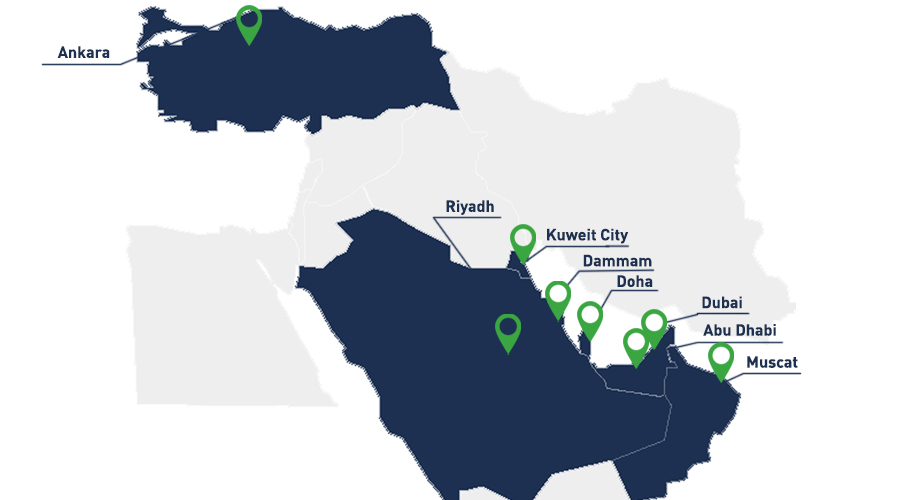

Apave is an international group specializing in risk management, with over 150 years of experience.
Every day, Apave's 18,000 employees collaborate with customers to help them protect what they value most: their employees, customers, and assets. Apave offers services and expertise in five key areas: inspection, training, testing and measurements, certification and labeling, and consulting and technical support.
Our teams consist of highly qualified and experienced experts. Thanks to their advanced technical expertise and in-depth knowledge of local regulatory frameworks, they perform reliable and precise technical inspections, considering the specific requirements of the country, sector, and asset involved.
Whether it concerns personal safety, site safety and compliance, environmental safety, or digital security, Apave’s mission is always to be a trusted third party for its customers.
Our other services
Our strengths

OUR CUSTOMER RELATIONSHIP APPROACH

OUR EXPERTISE




